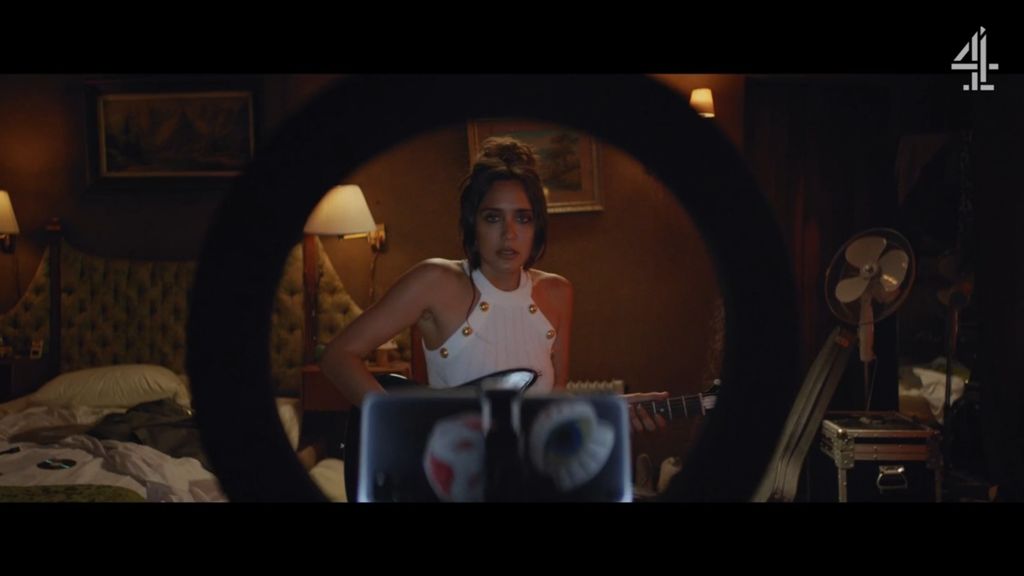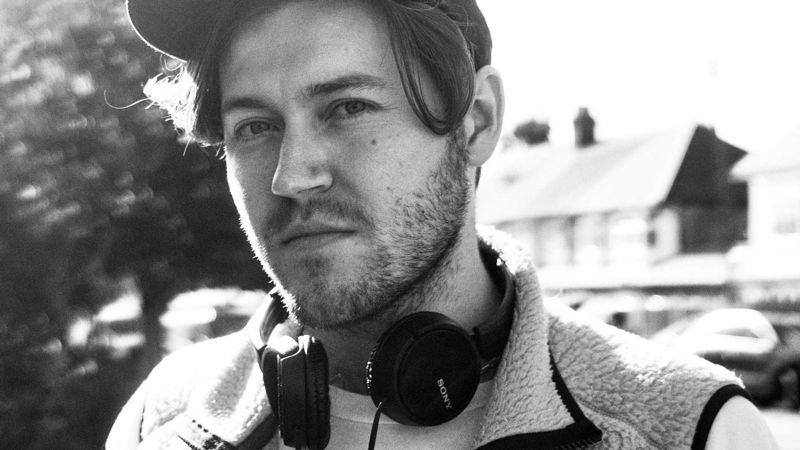Al MacCuish’s culture club
Al MacCuish, Co-Founder of Sunshine, believes that leveraging culture – by achieving the tricky triumvirate of being interesting, entertaining and rewarding – is the way to conjure creative interest, which is why the brands his company work with, including Diesel, Balmain and Victoria’s Secret, have done just that.
The Co-Founder of Sunshine, Al MacCuish, takes a keen interest in culture. Not unusual, you might think; most people in advertising are interested in culture.
Being talked about, referenced and imitated has long been a perfectly reasonable pathway to success, and influence has always been advertising’s currency.
"The only people who write about advertising are the trade press. That’s until something happens with an advert that bleeds over into popular culture.”
MacCuish, though, believes that too many brands have got into the habit of simply interrupting culture, rather than being part of it and, because of this, its currency is on the slide. “The majority of people who write about advertising,” MacCuish says, “are the trade press. Until something happens with work that bleeds over into popular culture.”
Credits
powered by
- Agency The Sunshine Company/London
- Production Company Alldayeveryday
- Director Cheryl Dunn
-
-
Unlock full credits and more with a Source + shots membership.
Credits
powered by
- Agency The Sunshine Company/London
- Production Company Alldayeveryday
- Director Cheryl Dunn

Credits
powered by
- Agency The Sunshine Company/London
- Production Company Alldayeveryday
- Director Cheryl Dunn
Above: One of Sunshine's recent campaigns for Diesel.
And this is Sunshine’s forte. Founded in 2013, the agency’s website states that it is ‘creating the future of brand behaviour’. The company’s clients have included, among others, Gucci, Diesel, La Mer, Victoria’s Secret, Balmain and Jimmy Choo, and the work they have produced ranges from social campaigns featuring Hollywood stars and photographic documentary projects, to podcasts and an online mini-series.
The key to all of these approaches though, says MacCuish lies in three things; be interesting, be entertaining, and be rewarding. This, he says, is something drummed into him when he worked at Mother, as Creative Director between 2005 and 2011 and then Head of Entertainment until 2013. “Mother is a fantastic proponent of [those things],” says MacCuish. “I was trained in the idea that if you really want someone to pay attention to you, you’ve got to give them something in return. Which is different to just having something to tell them.”
"From a brand to a news channel to a theatre to a band; we’re all competing for this finite amount of attention.”
Leveraging culture, though, and using it to your advantage, isn’t necessarily easy, especially if it’s not something inherent in your brand. But even if that’s the case, you still have to find ways to make an impact. “In the end, it’s an attention economy,” MacCuish says. “It’s the one thing that unites everybody; from a brand to a news channel to a theatre to a band; we’re all competing for this finite amount of attention.”

Above: Al MacCuish, Co-Founder of Sunshine.
If the war is for people’s attention, then culture is the battleground on which that war is waged, and one of the skirmishes in this ongoing conflict is between ‘story’ and ‘messaging’. “The traditional [approach],” says MacCuish, “which many media models still follow, is from the 60s, 70s and 80s, where you take all the information that could be relevant about a brand, you reduce it down to a single proposition then, through interruptive media, you repeat that message enough times - to far more people than actually care about it - with the intention that it’s going to resonate with the consumer that you’re really targeting. It might work in the FMCG world, but it doesn’t really work in fashion and luxury because there’s a need for a much richer conversation going on there.”
"If I was a brand, I would want to be on the jersey of the player who’d just scored the winning goal. But there’s not much more of a narrative going on beyond the fact that you are associated with that individual."
The fashion and luxury sectors are where Sunshine excels and MacCuish says he enjoys being there because the brands within them aren’t just part of culture, they are their own culture. “It makes sense that beer brands sponsor football matches,” he says. “If I was a brand, I would want to be on the jersey of the player who’d just scored the winning goal. But there’s not much more of a narrative going on beyond the fact that you are associated with that individual.
"Today, we’re in this golden age of content, and I think luxury and fashion businesses have creativity as an imperative. [Those brands] are based on generating products, so in order to get people excited about new things, you’ve got to keep coming up with new ways of presenting them and contextualising those products or collections. Story is the way that they most successfully do that.”

Above: It makes sense for beers brands to sponsor a football team or player, "but there’s not much more of a narrative going on beyond the fact that you are associated with that individual."
And story, MacCuish relays, isn’t just something a brand uses in its marketing. Instead, it is all that a brand is. “It’s all that you say. All that you do. All that you are. It’s the people who run the company. The way in which your product might be evolving might be part of a bigger narrative but, if you take a step back, your story is everything you’re doing as a business.”
"If you take a step back, your story is everything you’re doing as a business.”
Stories need a narrative and MacCuish says that archetypal plots such as ‘the quest’ or ‘the voyage and return’ can be attributed, in many instances, to brands. Nike and Apple, for instance, are both built on the ‘overcoming the monster’ archetype. The monster of apathy and lack of self-confidence in Nike’s case, or the conventional grey boxes and homogeny in Apple’s. “They’ve got them baked into their brand DNA,” adds MacCuish. “But they’re two of the best, most valuable brands in the world.”
Nike and Apple have found their niche, their place in culture, and that’s a big part of what can drive success. MacCuish also says that knowing where your audience is, is imperative. He cites Sunshine’s work with Diesel as a case in point. The agency looked at the brand and realised that the answer to their problem was hiding in plain sight.
Above: Sunshine's Tracks campaign embraced Diesel's history with club culture.
“I grew up in clubland in Glasgow,” MacCuish says. “Diesel was one of the first brands I would save up to buy. They always had a connection with club culture. In fact, it was one of the places that they exploded in the 90s and early 2000s. If you chart their greatest periods of success, it was when they were most integrated into the world of clubs and subculture.
"Part of the transformation strategy was to really mine the history of what the business was: what made it successful?"
"They lost that focus a bit, so part of the transformation strategy was to really mine the history of what the business was: what made it successful? Why did people care? How did it operate in culture when it was at its most successful?”
So, Sunshine partnered Diesel with underground radio station NTS to launch Tracks, a campaign featuring a series of live events which launched the stretchy, dance-floor friendly collection, Track Denim.
Above: Sunshine worked with Cara Delevingne on a recent Balmain campaign.
But, back in the 90s, was Diesel’s background as a clubber’s go-to brand planned? Did the then-leaders of that business target that audience or was the association pure chance? Ultimately, can brands really lead culture, or is hanging onto its coattails and hoping for reflected resonance the best they’re able to do?
"I don’t think there’s any brand that we’ve ever worked with that has claimed to create culture. But, then, define a brand."
“That’s the interesting thing about it,” answers MacCuish. “You’ve got this tension between culture, something that’s relatively organic, and branding and marketing, something that can be very formal. But it’s about just getting in there and being useful, respectful, interested and passionate.
"Being a facilitator of something that’s already happening? Well, brands have been doing that for years. I always really admire Converse and what they did in the music space, because they built studios and created access points for people to make music. That’s legit. Converse has always had a relationship with rock and roll, and music of every kind of genre. I don’t think there’s any brand that we’ve ever worked with that has claimed to create culture. But, then, define a brand."
Credits
powered by
-
-
- Director Bradley & Pablo
-
-
Unlock full credits and more with a Source + shots membership.
Credits
powered by
- Director Bradley & Pablo
- Creative Director Catherine Hope
- Executive Producer Ted Thornton
- Producer Ross Levine
- DP Pablo Berron
- 2nd unit DP Laura Merians Goncalves
- Composer Michael Yezerski

Credits
powered by
- Director Bradley & Pablo
- Creative Director Catherine Hope
- Executive Producer Ted Thornton
- Producer Ross Levine
- DP Pablo Berron
- 2nd unit DP Laura Merians Goncalves
- Composer Michael Yezerski
Above: In 2021 Sunshine created an episodic online mini-series for Balmain, called Fracture.
“I went to see the Jay-Z exhibition in the Brooklyn Library over the summer,” MacCuish continues. “What an ingenious individual. What a visionary, an entrepreneur, a businessman, an artist. There’s a great quote on one of the video screens where he says, ‘We are culture, nothing moves without us.’ So, I think it depends on what we actually mean by ‘brand’.
I think Taylor Swift is a brand. Look at what she has done commercially. She has surprised so many parts of the entertainment industry by entrepreneurially taking risks and reaping the reward. She’s behaving like a brand. [Sunshine is] very open minded in defining what a brand is. There’s a general understanding that it’s businesses that have got things to sell, but Taylor Swift has got 80,000 seats in a stadium and a cinema run for her film to sell.”
"In part, [the problem] can be the tenure that many people are in those roles for. It’s too short to take risks and see change through."
The work Sunshine produces is both entertaining and, crucially, successful for the brands for which they create it. So, why aren’t more clients dipping a toe into the warm waters of branded entertainment? “I think it just depends where you look,” says MacCuish. “If you look at many FMCG brands, there is a fair bit of following conventions [happening]. No one is going to get in trouble for following those conventions. I think, in part, it can be the tenure that many people are in those roles for. It’s too short to take risks and see change through."

Above: What do we mean when we use the word 'brand'? asks MacCuish. Isn't Taylor Swift, who "has surprised so many parts of the entertainment industry by entrepreneurially taking risks and reaping the reward" a successful brand?
“The natural desire to mitigate risk is what drives patterns and conventional behaviour," MacCuish continues. "I get that. That's just human nature. But it’s why, every now and again, you can really rail against that and do something quite radically different.”
While brands seem to be becoming more culturally relevant, is the industry’s own impetus waning?
It is also, MacCuish states simply, really hard to make stuff that’s brilliant; “really, really hard”, in fact. You can, he says, have the best people and the best of intentions, but sometimes it just doesn’t work.
All this talk of culture makes me wonder aloud, before we finish, whether advertising itself is as culturally relevant as it once was. Whether advertising catchphrases, comedy sketches and characters are as resonant with people today as they were in the halcyon days of Tango, the Smash Martians, the Hoffmeister bear and Bob Hoskins telling us ‘it’s good to talk’. While brands seem to be becoming more culturally relevant, is the industry’s own impetus waning?
Credits
powered by
- Agency Clemmow Hornby Inge
- Production Company MJZ/USA
- Director Noam Murro
-
-
Unlock full credits and more with a Source + shots membership.
Credits
powered by
- Agency Clemmow Hornby Inge
- Production Company MJZ/USA
- Director Noam Murro
- DP Adrian Wild
- Producer Doochy Moult
- Editor Cyril Metzger
- VFX Smoke & Mirrors London
- Exec Producer Helen Kenny
- Advertisers Supervis Sarah Hoyle
- Account Supervisor Janine Chandler
- Art Director Peter Gatley
- CD/Writer Charles Inge
- Producer Veronica Alkon

Credits
powered by
- Agency Clemmow Hornby Inge
- Production Company MJZ/USA
- Director Noam Murro
- DP Adrian Wild
- Producer Doochy Moult
- Editor Cyril Metzger
- VFX Smoke & Mirrors London
- Exec Producer Helen Kenny
- Advertisers Supervis Sarah Hoyle
- Account Supervisor Janine Chandler
- Art Director Peter Gatley
- CD/Writer Charles Inge
- Producer Veronica Alkon
Above: The attention economy of years past, with culturally dominant commercials like Tango, is completely different to the way we consume media, and therefore adverts, today.
“The advertising industry [back then] was much more stable and far more defined, and the attention economy was unrecognisably simple,” answers MacCuish. “You had far fewer channels and you had congregations of people on a regular basis watching particular programmes and then being exposed to good, bad or great advertising. That was then, and that’s how culture worked.
“The advertising industry [back then] was much more stable and far more defined, and the attention economy was unrecognisably simple.”
“I think what hasn’t changed is that human beings are far more similar to one another than people tend to think. We’ve got so many key drivers; we want to belong, we want to feel safe, we want to love, we want to be loved. There are some big, universal and timeless themes that drive a lot of decision-making, particularly around things that are emotional.
"That’s the behavioural science and economics of all of this, the tapping into what it is that’s ultimately driving somebody’s behaviour. I think that is the job now. Finding ways to positively contribute to the things that people care about is a big deal.”
)




















